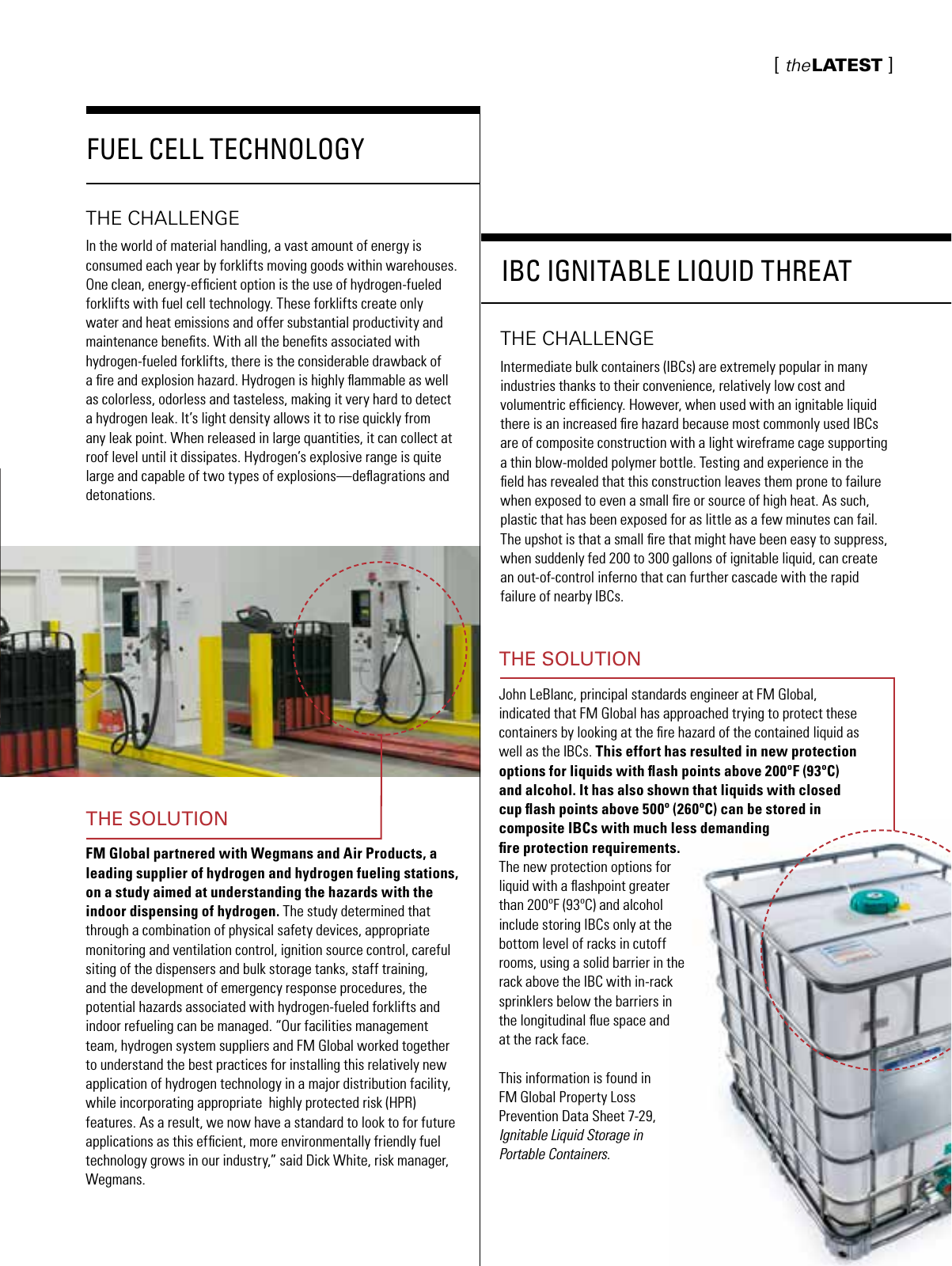Reason Mag Q1 2014 Seite 11
Hinweis: Dies ist eine maschinenlesbare No-Flash Ansicht.Klicken Sie hier um zur Online-Version zu gelangen.
Inhalt
ISSUE 1 2014 Reason 11 theLATEST THE CHALLENGE In the world of material handling a vast amount of energy is consumed each year by forklifts moving goods within warehouses One clean energy efficient option is the use of hydrogen fueled forklifts with fuel cell technology These forklifts create only water and heat emissions and offer substantial productivity and maintenance benefits With all the benefits associated with hydrogen fueled forklifts there is the considerable drawback of a fire and explosion hazard Hydrogen is highly flammable as well as colorless odorless and tasteless making it very hard to detect a hydrogen leak It s light density allows it to rise quickly from any leak point When released in large quantities it can collect at roof level until it dissipates Hydrogen s explosive range is quite large and capable of two types of explosions deflagrations and detonations FUEL CELL TECHNOLOGY THE SOLUTION FM Global partnered with Wegmans and Air Products a leading supplier of hydrogen and hydrogen fueling stations on a study aimed at understanding the hazards with the indoor dispensing of hydrogen The study determined that through a combination of physical safety devices appropriate monitoring and ventilation control ignition source control careful siting of the dispensers and bulk storage tanks staff training and the development of emergency response procedures the potential hazards associated with hydrogen fueled forklifts and indoor refueling can be managed Our facilities management team hydrogen system suppliers and FM Global worked together to understand the best practices for installing this relatively new application of hydrogen technology in a major distribution facility while incorporating appropriate highly protected risk HPR features As a result we now have a standard to look to for future applications as this efficient more environmentally friendly fuel technology grows in our industry said Dick White risk manager Wegmans THE CHALLENGE Intermediate bulk containers IBCs are extremely popular in many industries thanks to their convenience relatively low cost and volumentric efficiency However when used with an ignitable liquid there is an increased fire hazard because most commonly used IBCs are of composite construction with a light wireframe cage supporting a thin blow molded polymer bottle Testing and experience in the field has revealed that this construction leaves them prone to failure when exposed to even a small fire or source of high heat As such plastic that has been exposed for as little as a few minutes can fail The upshot is that a small fire that might have been easy to suppress when suddenly fed 200 to 300 gallons of ignitable liquid can create an out of control inferno that can further cascade with the rapid failure of nearby IBCs IBC IGNITABLE LIQUID THREAT THE SOLUTION John LeBlanc principal standards engineer at FM Global indicated that FM Global has approached trying to protect these containers by looking at the fire hazard of the contained liquid as well as the IBCs This effort has resulted in new protection options for liquids with flash points above 200ºF 93ºC and alcohol It has also shown that liquids with closed cup flash points above 500º 260ºC can be stored in composite IBCs with much less demanding fire protection requirements The new protection options for liquid with a flashpoint greater than 200ºF 93ºC and alcohol include storing IBCs only at the bottom level of racks in cutoff rooms using a solid barrier in the rack above the IBC with in rack sprinklers below the barriers in the longitudinal flue space and at the rack face This information is found in FM Global Property Loss Prevention Data Sheet 7 29 Ignitable Liquid Storage in Portable Containers
